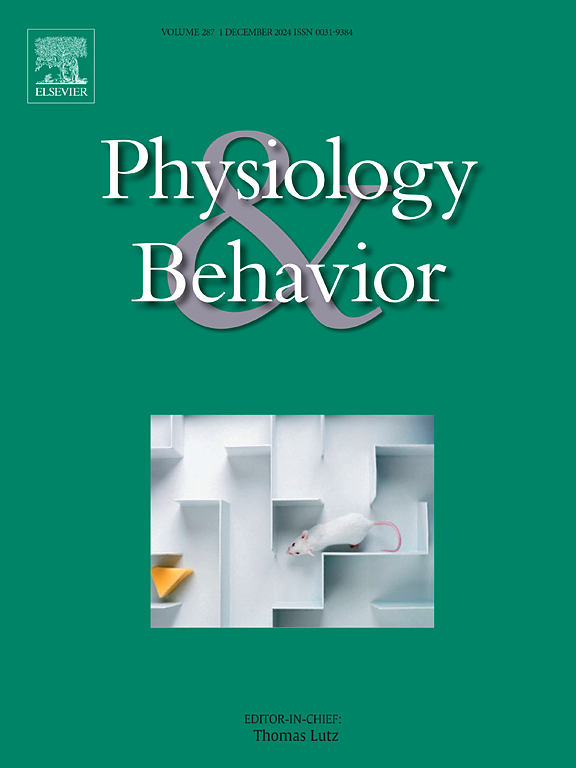成功减肥者的步行经济性和运动效率。
IF 2.5
3区 医学
Q2 BEHAVIORAL SCIENCES
引用次数: 0
摘要
目的:短期减肥后,运输的能量成本会降低,运动效率会提高。这些变化在长期体重维持过程中是否会持续,目前尚不清楚:我们比较了体重减轻维持者(WLM,体重减轻≥13.6 千克且维持≥1 年)、无肥胖对照组(NC,BMI 与 WLM 目前的 BMI 相似)和超重/肥胖对照组(OC,BMI 与 WLM 减重前的 BMI 相似)的步行经济性和运动效率。能量消耗(EE)和呼吸商是在休息、站立和跑步机行走时使用间接热量计测量的。以 0.75、1.12 和 1.52 米/秒的速度在水平跑步机上行走时,测量了运输的总能量成本和净能量成本(J/kg/m)。在倾斜跑步机上行走(坡度为 2%、4% 和 6%)和匀速(1.12 米/秒)时,测量了总效率、净效率和三角效率(%):结果:WLM(n=32,BMI:23.8±2.3 kg/m2)和 NC(n=28,BMI:22.7±1.6 kg/m2)与 OC(n=26,BMI:33.0±4.5 kg/m2)相比,在休息、站立和行走时的 EE(kJ/min)明显较低(p 结论:WLM 的行走经济性较低,而 NC 的行走经济性较高:与 OC 相比,WLM 的步行经济性更低,步行效率更高,但 WLM 和 NC 之间没有差异。因此,保持体重大幅下降的人之所以能成功实现长期减肥,部分原因是他们能够抵御步行能量的适应性降低。本文章由计算机程序翻译,如有差异,请以英文原文为准。
Walking economy and exercise efficiency in successful weight loss maintainers
Purpose
Following short-term weight loss, the energetic cost of transport decreases and exercise efficiency increases. Whether changes persist during long-term weight maintenance is unknown.
Methods
We compared walking economy and exercise efficiency in weight loss maintainers (WLM, maintaining ≥13.6 kg weight loss for ≥1 year), controls without obesity (NC, BMI similar to current BMI of WLM), and controls with overweight/obesity (OC, BMI similar to pre-weight loss BMI of WLM). Energy expenditure (EE) and respiratory quotient were measured using indirect calorimetry at rest, while standing, and during treadmill walking. Gross and net energetic cost of transport (J/kg/m) was measured during level treadmill walking at 0.75, 1.12, and 1.52 m/s. Gross, net, and delta efficiency (%) were measured during inclined treadmill walking (2 %, 4 %, and 6 % grade) and a constant speed (1.12 m/s).
Results
WLM (n = 32, BMI: 23.8 ± 2.3 kg/m2) and NC (n = 28, BMI: 22.7 ± 1.6 kg/m2) had significantly lower EE (kJ/min) compared to OC (n = 26, BMI: 33.0 ± 4.5 kg/m2) during rest, standing, and walking (p < 0.01). Net energetic cost of transport was significantly lower in WLM compared to OC at 1.12 and 1.52 m/s (p < 0.05). Net efficiency was significantly greater in WLM compared to OC while walking (p ≤ 0.05). There were no significant differences between WLM and NC for any measures of economy or efficiency.
Conclusion
WLM had lower walking economy and greater walking efficiency compared to OC, but there were no differences between WLM and NC. Thus, individuals maintaining significant weight loss may be successful with long-term weight loss, in part, due to resistance against adaptive reductions in walking energetics.
求助全文
通过发布文献求助,成功后即可免费获取论文全文。
去求助
来源期刊

Physiology & Behavior
医学-行为科学
CiteScore
5.70
自引率
3.40%
发文量
274
审稿时长
47 days
期刊介绍:
Physiology & Behavior is aimed at the causal physiological mechanisms of behavior and its modulation by environmental factors. The journal invites original reports in the broad area of behavioral and cognitive neuroscience, in which at least one variable is physiological and the primary emphasis and theoretical context are behavioral. The range of subjects includes behavioral neuroendocrinology, psychoneuroimmunology, learning and memory, ingestion, social behavior, and studies related to the mechanisms of psychopathology. Contemporary reviews and theoretical articles are welcomed and the Editors invite such proposals from interested authors.
 求助内容:
求助内容: 应助结果提醒方式:
应助结果提醒方式:


